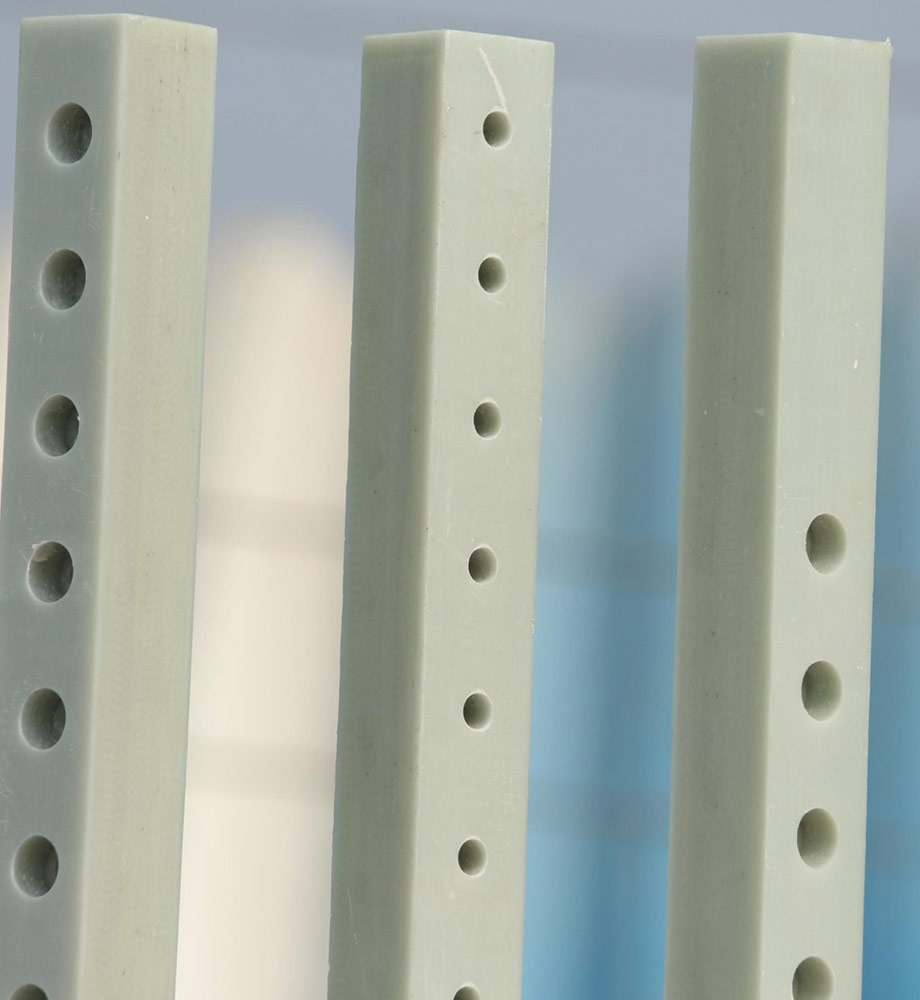Key Features
- Pultruded or molded FRP extrusions (angle, I- or C-sections, V-bars, etc.) designed to support fill load. UV- and corrosion-resistant composite material; high stiffness to prevent sagging. Custom sizes and spacings can match tower design.
Benefits
- Delivers stable, uniform support to fill media while resisting bending or warping over time. FRP’s chemical inertness prevents bonding or fouling, allowing easy cleaning and long service life. Installation is faster and simpler – supports often snap or bolt together, eliminating complex hardware or treatments. The bottom-supported design provides outstanding durability and ease of installation.
Applications
- Used in the fill section of evaporative cooling towers (both crossflow and counterflow types). They form the skeleton that holds splash bars or film fill blocks at correct spacing. Essential for splash-type and film-type fill systems in industrial and HVAC cooling towers.
Technical Specifications
- Common fill support bars are 50–150 mm deep and span the width of the tower (often 1–3 m long modules). They are manufactured from pultruded FRP with fiber reinforcements for rigidity. Load-bearing capacity is engineered so that combined supports distribute water weight evenly (as noted by one manufacturer: “maximum weight distribution over increased surface area”).
Unique Selling Points (USPs)
- FRP fill supports do not corrode or deteriorate with time, unlike wood or metal supports. They maintain precise fill alignment (no sagging), which is critical for thermal performance. By resisting fouling and chemical attack, they reduce maintenance and downtime. Their durability and longevity contribute to reliable cooling tower operation.

